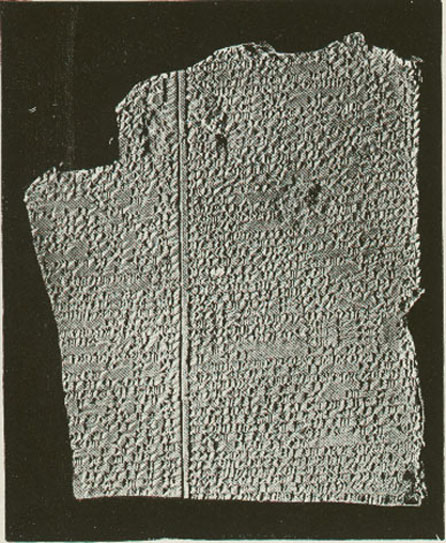The Epic of Gilgamesh is an epic poem from Ancient Mesopotamia and is among the earliest known works of literary fiction. Scholars surmise that a series of Sumerian legends and poems about the mythological hero-king Gilgamesh, who might have been a real ruler in the late Early Dynastic II period (ca. 27th century BC)[1], were gathered into a longer Akkadian poem long afterward, with the most complete version existing today preserved on twelve clay tablets in the library collection of the 7th century BC Assyrian king Ashurbanipal. It was originally titled He who Saw the Deep (Sha naqba īmuru) or Surpassing All Other Kings (Shūtur eli sharrī).

There are five extant stories from the Sumerian version of the Gilgamesh epic cycle:

There are five extant stories from the Sumerian version of the Gilgamesh epic cycle:
- Gilgamesh and Huwawa (version A translation, version B translation) (Corresponds to the Cedar Forest episode (tablets 3-5) in the Akkadian version.)
- Gilgamesh and the Bull of Heaven (translation) (Corresponds to the Bull of Heaven episode (tablet 6) in the Akkadian version. The Bull's voracious appetite causes drought and hardship in the land.)
- Gilgamesh and Aga (translation) (Gilgamesh vs. Aga of Kish, no correspondence with the Akkadian version.)
- Gilgamesh, Enkidu and the Netherworld (translation) (Corresponds to tablet 12 in the Akkadian version.)
- The Death of Gilgamesh (translation) (This is the story of Gilgamesh's, rather than Enkidu's death. The Sumerian flood hero, Zi-ud-sura, is invoked, but only as a contrast between the flood hero who saved life and was giving eternal life in return, and the mortal Gilgamesh.)